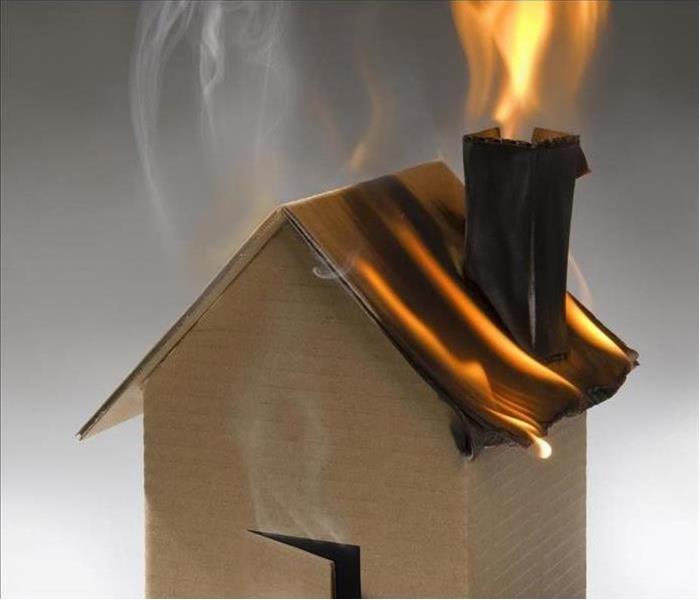Developing a Plan of Action for Fire Restoration
7/6/2018 (Permalink)
While most fires are far less damaging than many people believe, the first sight of a fire-damaged home can still be overwhelming for most residents. A professional restoration service can clean the majority of the damage and keep the costs of replacement to a minimum.
Restoring homes after fire damage is a SERVPRO specialty. We have decades of experience in Illinois and a highly trained response team that can analyze surface types and work with the fire department to determine other factors after a fire that help us determine a cleanup plan specific for each customer.
- Surface Type – Non-porous surfaces (vinyl wall coverings and glossy, enamel paint for example) are much simpler to clean than porous surfaces (i.e. wallpaper and flat, latex paint). Porous surfaces are penetrated much easier by smoke odors and particulate residue, so they require more intensive cleaning products and devices to agitate them and release the particles.
- Natural fibers (cotton and wool clothing) attract less residue than synthetic fibers (carpets) but are harder to clean than synthetics.
- Surface Age – Over time, paint deteriorates and becomes more porous. It is also true for carpets and clothing, regardless of the fiber content.
- Heat Level – The higher the temperature, the faster paint breaks down and furniture finishes melt and ‘bubble.' Surfaces warp and expand more the hotter a fire burn which allows particulates and odors to penetrate deeper.
- Moisture Level – A high moisture level combined with high temperatures cause tile and vinyl to yellow and create permanent stains in other structural and personal property. The most common sources of moisture in this situation comes from home sprinklers and water used by firefighters.
- Type of Material – Burnt natural materials (wood, paper, and cotton fabric) leave a dry, powdery residue which is easier to remove than the wet, smeary residue left behind by burnt synthetic materials.
- Temperature Changes – Some residues increasingly damage surfaces as they cool. They form a film which is harder to remove and may even cause enough permanent damage to warrant disposal of the building material or personal property item.
Restoring your home after a fire can be expensive and time-consuming. The agency you hire must have the experience and patience to walk you through the process. SERVPRO of Elk Grove / E. Schaumburg / Itasca / Roselle is here to help. Call us today at (847) 593-3055.

 24/7 Emergency Service
24/7 Emergency Service
